Picking the Best Camera Gear for an Alaskan Cruise
Alaska is a big place, but you don’t need a big bag of gear to make good photos there. This is especially true when you’re on a cruise. In fact, you can do quite a lot with a few choice pieces of kit.
As for this article, it’s aimed at the serious photographer going on a typical Alaska cruise. What I mean by serious photographer is that you care about your images, not that you have a lot of gear. Further, by a typical cruise, I mean that you’ll be on a normal cruise ship, not a photography oriented tour, such as those offered by National Geographic or Lindblad expeditions.
More importantly, I firmly believe that there’s no right or wrong platform, brand, or type of camera for this kind of thing. While I personally use Canon full frame cameras, all of the concepts that I’ll cover can be applied to any brand or format.
Subject Matter and Shooting Scenarios
Arguably, the two biggest draws to an Alaskan cruise are the scenery and the wildlife. However, there are a lot of opportunities for other shots if you’re willing to explore a bit.
That said, a there are a couple of things to keep in mind in the ports. To start with, all of the cruise ports are heavily commercialized around the tourist traffic. In some places, for example Skagway, it does make the “rustic historical mining town” feel more like a Disney theme park.
Secondly, there are going to be tons of people in town when the ships are in port. In 2017 Ketchikan, a town of just over 8,000 people, saw more than 1 million tourists over the 5 month cruise season. From a photographic perspective, if you’re trying to shoot the architecture of some of the more rustic towns, expect the streets to be filled with tourists.
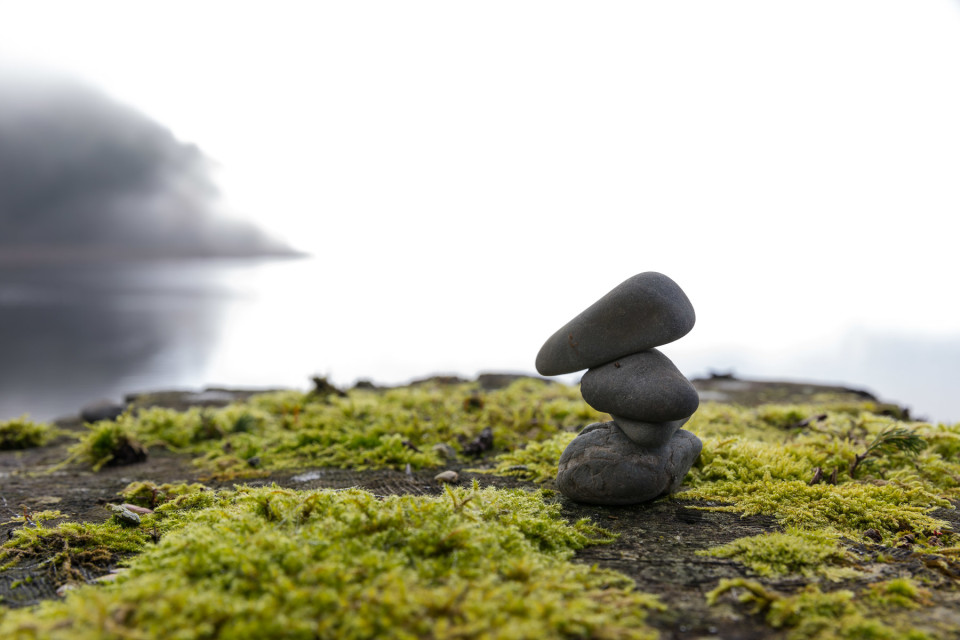
Canon EOS 5D mark IV, EF 24-70mm f/2.8L II USM
47mm, 1/100, f/8, ISO 100
This article doesn’t cover port or subject matter specific details. However, I have written more in depth guides for those topics that can be found through the following links:
Landscapes
Landscapes can be shot from both the cruise ship as on shore.
Shooting from the ship poses some non-standard gear choices for landscape photography. In order to maintain safe navigation for the ship, you’ll never be that close to shore.
Because of this, I found that if I tried to shoot a landscape with a wide angle lens like I normally might, I ended up throwing away a lot of resolution on uninteresting sky and sea. For example, I might get 3-4 MP of usable image from a 30 MP camera.
Instead, I found I got much better images by shooting with longer focal lengths and either isolating details in a single frame, or stitching panos together from multiple frames.
For single images, I frequently shot in the 200–400 mm range to pick out details like cabins and waterfalls.
For wider vistas, I would shoot a sequence of frames and stitch them together as a pano. For these I usually was shooting in the 70–200 mm range to limit the resolution wasted on the sky and sea.
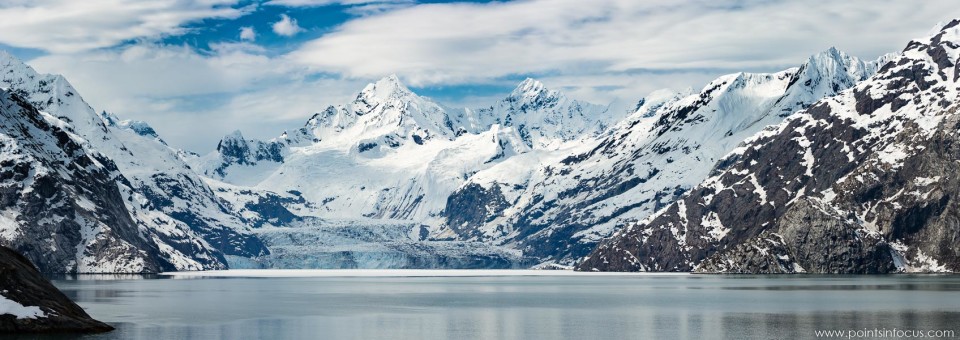
Canon EOS 5D mark III, EF 100-400mm f/4.5-5.6L IS II USM
14 frames stitched @ 148mm, 1/800, f/8, ISO 100
On shore, there are more opportunities to use a wide angle lens. Most of southeast Alaska is a temperate rainforest and that offers a more intimate environment where the wide angle of view can be used to good effect.
With that said, there are some general considerations you’ll want to keep in mind while you’re there.
First, due to the distances involved in some cases images may take on a strong blue cast. I found this most noticeable in Glacier Bay National Park where there was also a lot of snow and ice to reflect blue light.
I didn’t find any effective way to combat this. While it might be partially driven by UV light, I was shooting with lenses with UV filters and still had the problem. In some cases, you can correct of this in post processing. In other cases, the only viable answer may be to convert the images to black and whites.
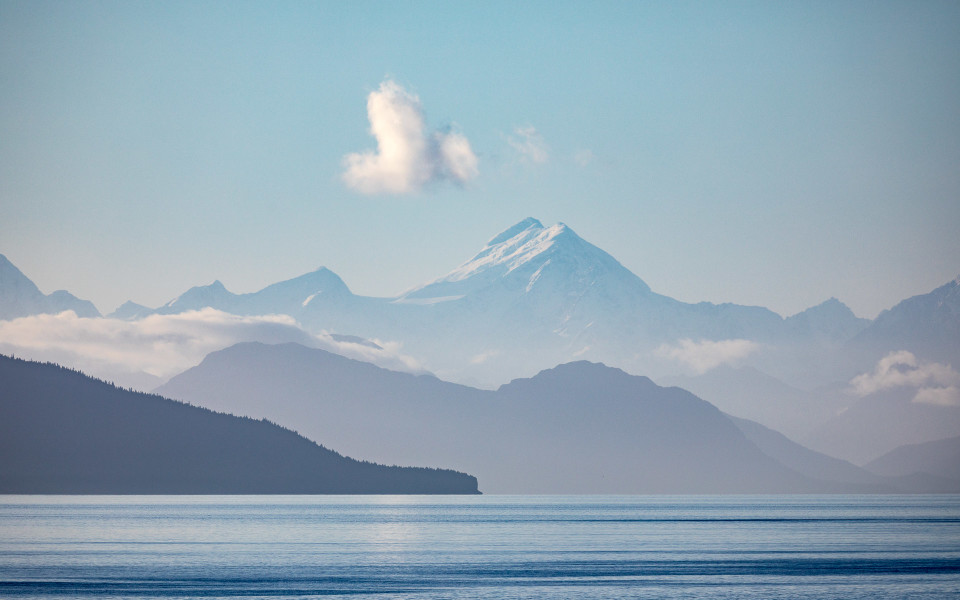
Canon EOS 5D mark IV, EF 100-400mm f/4.5-5.6L IS II USM + 1.4x III TC
368 mm, 1/640, f/7.1, ISO 125
The second consideration I found was shooting at dusk. Due to the high latitude, during the summer southeast Alaska never actually sees night; it’s perpetually locked in twilight. This means that sunsets and twilight last longer than at more equatorial latitudes.
These long twilight can produce interesting color issues, as all the light will be indirect and will pick up a color cast from sky, sea, and mountains that it’s bouncing off of before it illuminates your scene. You can attempt to correct for this in post processing by eye. However, it’s extremely useful to remember to take a picture of ship’s white hull or a white balance target of some sort to help.
Wildlife
Alaska’s other big draw is the wildlife. Quite a lot of wildlife, especially whales and porpoises, can also been seen and photographed from the cruise ship. However, the best images are going to be had by getting closer on a shore excursion.
Wildlife photography is the realm of long lenses. The question isn’t if you’ll need a long lens, but how long of a lens do you need. For example, in Yellowstone National Park, I would strongly recommend a 600 mm lens or even more if you can swing it.
Fortunately, I found Alaska, at least when on a cruise, to be much more reasonable. Wildlife either fell comfortably in the range of a 400 mm lens (potentially with a 1.4x TC), or it was so far away that it wouldn’t make a good image regardless of your lens.
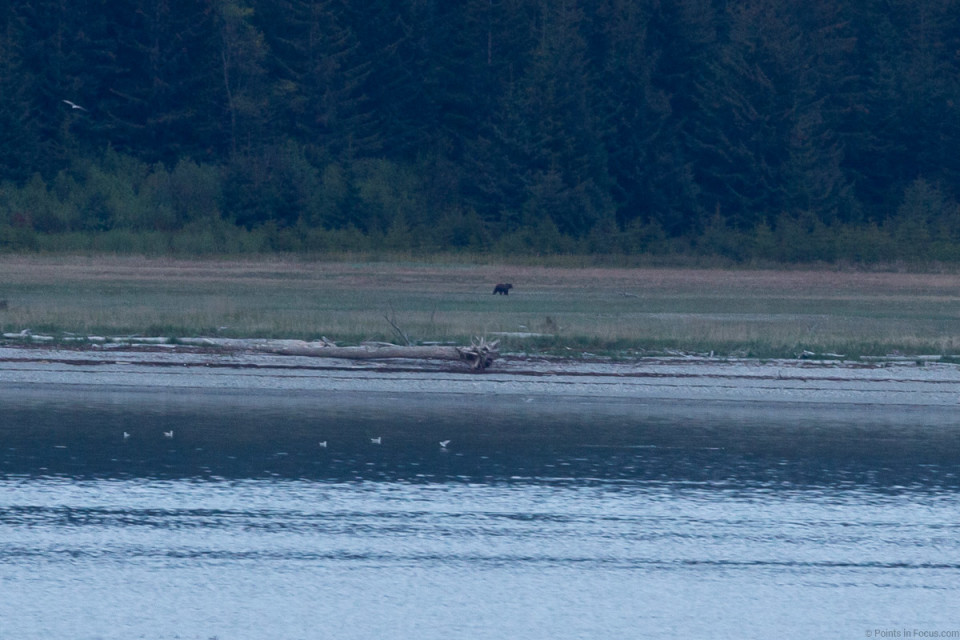
Canon EOS 5D mark III, EF 100-400mm f/4.5-5.6L IS II USM
400 mm + a lot of cropping, 1/50, f/5.6, ISO 1250
For example, the above image of a bear has a field of view after cropping equivalent to a 1400 mm lens. Even with that, the bear in so small and indistinct enough that it doesn’t make a great image. To get a tighter image would have required a lens around 6000 mm, and even then the image wouldn’t be great due to the distance and atmospheric effects.
Whales and porpoises play out a lot better from the cruise ship. To start with, they can get much closer to the ship.
The following image was shot with a 560 mm lens from the deck of my cruise ship. While it’s not the closest I saw a whale to the ship, it’s far more interesting due to the breaching.
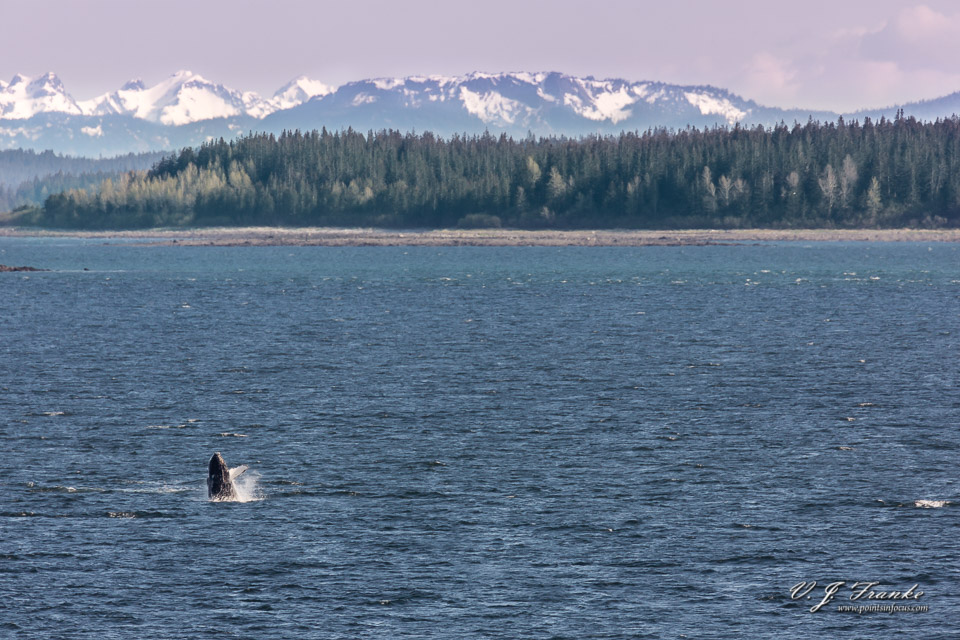
Canon EOS 5D mark III, EF 100-400mm f/4.5-5.6L IS II USM + 1.4x II TC
560 mm, 1/640, f/8, ISO 400
While this might seem disheartening, it does show that you can shoot from the cruise ship and get some images. While the whale in this image isn’t much bigger than the bear in the previous image, the image is un-cropped at 560 mm. A focal length that’s well within reach for most people, especially if you’re shooting on a crop platform.
However, shore excursions provide much better opportunities to get close and get good images.
On shore, I generally found the focal length situation was basically the same. If I couldn’t shoot something with at worst a 400 mm lens and a 1.4x TC, I wasn’t going to be able to shoot it without something much longer.
That said, one thing that surprised me was how often I was shooting at moderately high ISOs to keep my shutter speeds high. To start with, anytime it’s rainy and cast light will be limited, and this can be quite frequent in southeast Alaska. Additionally, on shore bear watching excursions tend to be in and around the cover of the Alaskan rainforest canopy which limits light even more.
Consider you Gear’s Weight
I’ve been traveling with camera gear for more than 4 years now, and weight has consistently been the factor that makes or breaks my enjoyment of the trip. Simply put, less weight has always translated to a much better experience for me.
Be selective of the gear you’re bringing, but don’t fail to bring something you’ll need.
Fortunately, or unfortunately as it might be, weight becomes more of a problem the higher up the gear ladder that you go.
On the cruise, the issue is partially moderated by being able leave stuff in your cabin. You can bring a bunch of gear, then only carry what you need for each excursion on that excursion. In fact, I use this approach on my first trip, since I didn’t know what I would need, and it worked well enough.
That said, excursions, especially those that involve flying, will have the tightest weight constraints. Many flight seeing tours will only permit you to carry a camera and lens, not a bag full of gear. In many cases, even small camera bags or belt pouches are prohibited.
My best suggesting when it comes to weight is to do your research and try to think about how you’ll use everything you’re packing. If you can’t think of a good use, leave it home.
The Right Camera
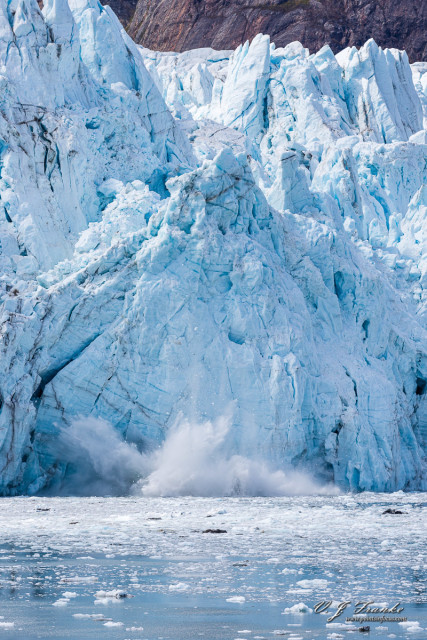
Canon EOS 5D mark III, EF 100-400mm f/4.5-5.6L IS II USM
241mm, 1/500, f/8 ISO 100
Put simply, in my experience, the right camera is the one you already have and know how to use.
This isn’t to say that there might not be a better camera out there, at least on paper. However, experience taught me that you shouldn’t underestimate the value familiarity when it comes to getting something done with your gear.
I’ve been in plenty of situations where I’ve been able to get a shot because I knew intuitively how to adjust settings in a pinch. Moreover, by knowing my gear, I know when I can expect to get a usable shot and when to put the camera down and enjoy the scene.
It doesn’t matter how good a camera specs are, if you miss the shot you’re trying to take. A picture is always better than no picture at all.
The Demands on the Camera
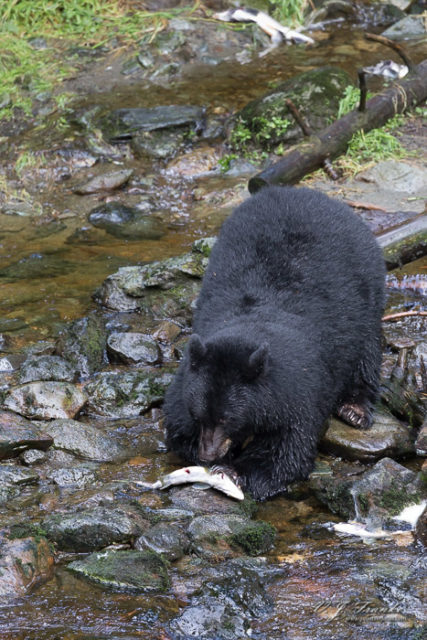
Canon EOS 5D mark IV, EF 100-400mm f/4.5-5.6L IS II USM
400 mm, 1/320, f/8, ISO 2500
After reading through the Subject Matter and Shooting Scenarios section, you might be able to guess at some of the demands that your camera will likely need to meet.
The good news here is that unlike a lot of places, the kind of photography you’ll be doing on a cruise doesn’t require a specialist camera.
What this means in terms of specs, is that you don’t need a particularly high resolution, frame rate, AF system, or beyond stellar high ISO capabilities. Instead, you’ll want a good balance of all of those features. As I said though, that really just describes most DSLRs, mirrorless, and even bridge cameras that have been made in the last, well, probably 8 years.
In my opinion, the key areas to consider are:
- A good balance between FPS and resolution.
- A reasonably good AF system with a reasonably dense pattern of AF points.
- Decent ISO performance in the 1600-6400; this is especially important if you’re shooting with an f/5.6 or slower lens.
Frame Rate
Personally, I’ve never run into a situation in Alaska where I wished I had a 10+ FPS capable camera. However, when photographing whales, eagles, and bears, I definitely recommend more than 3 or 4 FPS too.
Meeting these frame rates ins’t much of a problem for most modern cameras. However, there are exceptions, mostly in the entry level DSLR and mirrorless space. At the mid and higher tiers, almost universally this isn’t a problem.
Some bridge and compact cameras may suffer a bit in this area, but many bridge cameras are more than up to the task. However, even cameras like Nikon’s $300 Coolpix B600, Canon’s $230 PowerShot SX530 HS, or Panasonic’s $400 Lumix FZ80 can shoot at up to 7, 10, and 10 FPS respectively.
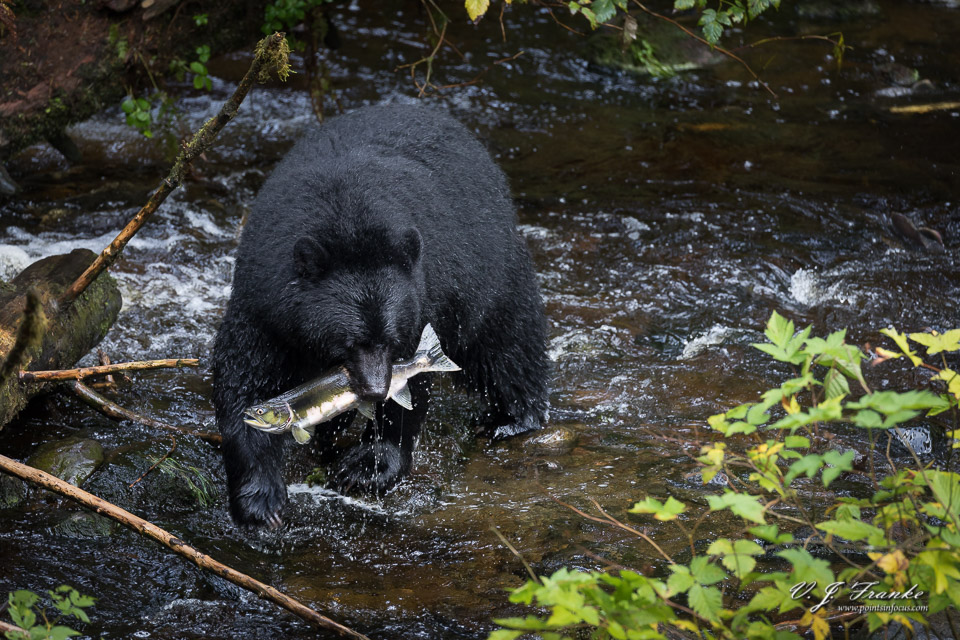
Canon EOS 5D mark IV, EF 100-400mm f/4.5-5.6L IS II USM
321 mm, 1/320, f/5.6 ISO 1000
AF Performance
Much like the frame rate, similar reasoning applies to the AF system. You absolute don’t need a pro level 50+ point AF system with 3D color tracking, face detect, and all the bells and whistles. You can certainly get along with something much less sophisticated. However, you do need something that can keep up with the situations at hand.
To start with I found that I used a lot of continuous AF when I was shooting in Alaska. Even when shooting landscapes from the ship, you have to remember that while the land isn’t moving, the ship is. Moreover, many cruise ships ply the waters at a decent speed, often close to 20 knots (23 MPH or 37 km/h) — speeds in glacier bay and especially narrow fjords will be slower.
As for wildlife, aside from birds in flight, I never ran into situations where there was a lot of rapid movement towards or away from me such that you absolutely needed a pro AF system to track them.
That said a AF system that can quickly achieve focus is important. On one whale watching trip, we had a humpback surface to feed right next to the boat while it was tied up at the dock. If your camera’s AF system takes a few moments to lock on to something, you would have missed that opportunity completely. Even with a pro level AF system, by the time I had reacted half of lunge had already happened.
Either way, when using continuous AF, higher AF point counts are useful in being able to control the composition while still being able to continuously track a subject. Mirrorless and bridge cameras have a small advantage here in that most of them can position the AF area almost anywhere in the frame. However, modern DSLRs even many entry level ones, have enough AF points to make composing images with off centered subjects easy enough.
ISO Performance
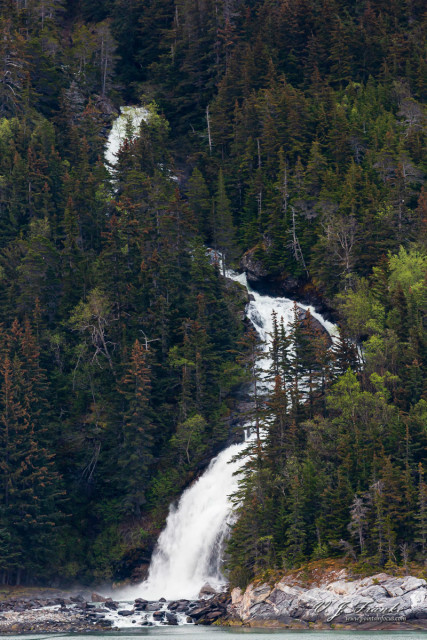
Canon EOS 5D mark III, EF 100-400mm f/4.5-5.6L IS II USM
400 mm, 1/40, f/5.6, ISO 1250
The final aspect of the camera I want to talk about is noise performance at moderate to high ISOs.
Broadly, there are three factors that I found played into this.
First, is rain. It doesn’t rain every day in southeast Alaska, but does rain a lot. Rain means overcast skies and that means a lot less light to work with. For shooting landscapes, where you can let the shutter speeds dip, this isn’t so much of a problem. However, for wildlife, you’ll need to keep your shutter speeds up (typically 1⁄1000s or faster) and that will also mean shooting at higher ISOs.
Secondly, is shooting under the cover of the forest canopies. As an example of this, the black bear images in this post were shot under the dense canopy at the Alaska Rainforest Sanctuary outside of Ketchikan. The vast majority of these images were shot at ISO 3200–6400 just to keep shutter speeds fast enough to not blur the bears.
Finally, is the long twilight period. Granted, not everyone is going to want to shoot in this corner of the day. I shot a number of waterfall images that I’m quite happy with during the long twilight while the ship was sailing through the Lynn Canal.
Unlike frame rate and AF performance, I can’t make a hard recommendation on a minimum here. Most modern cameras, even bridge cameras, support ISO settings as high as ISO 6400, DLSRs and mirrorless cameras will go much higher. However, just being able to shoot at that ISO, doesn’t mean that the images will be acceptable to you at that setting. Ultimately, you’ll need to make a judgement call on what you consider acceptable levels of noise in your images and whether your camera is up to that task.
What I’ve Used
On my trips, I’ve used Canon’s EOS 5D series; a 5D mark III, and later a 5D mark IV. These cameras gave me a good balance between resolution, at 22 and 30 MP respectively, and frame rates, at 6.5 and 7 FPS respectively. They both had solid pro-level AF systems, that could track things like eagles, whales, and bears. Finally, they could produce images that are acceptable to me at higher ISOs (for the 5D mark IV, as high as 12,800).
Do you need gear that “pro”?
Absolutely not. Many of today’s lower tier DSLRs and mirrorless cameras (in the $700-800 price range) can provide the necessary performance. Even most modern bridge cameras in the $300-500 range will even get close enough to be usable.
The biggest difference between the interchangeable lens cameras and the bridge cameras is going to be the image quality at higher ISOs. Bridge cameras with smaller sensors will preform worse than large sensor ILCs. However, while you trade the high ISO performance, bridge cameras have big advantages in weight, and potentially much greater zoom range compared to the ILCs.
One or More Bodies?
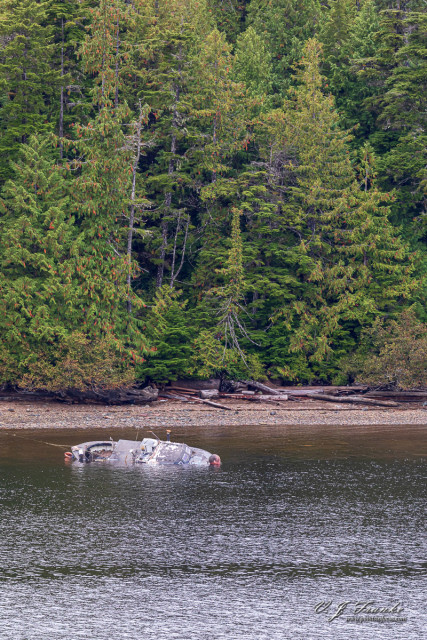
Canon EOS 5D mark IV, 100-400mm f/4.5-5.6L IS II USM, EF 1.4x III
309 mm, 1/320, f/7.1, ISO 1600
For me there are two ways to think about having a second camera:
- As a backup body that is used only if the primary fails.
- As a second body that is used in conjunction with the primary or to expand your capabilities alongside your primary
Given the limitations imposed by the nature of a cruise, I don’t feel that having two bodies is necessary. If you already have the gear, then taking a backup or secondary body won’t hurt. However, if you don’t already have the gear, I would not go out and buy or rent something.
That said, under some conditions you might find that you want another body to expand your capabilities in some way.
Backup Body
My intent with a backup camera is to have something that I can fall back to if my main camera is damaged, fails, or is lost or stolen. While I’m going to be upset about having my main camera go down, I’ll at least be able to shoot something; as opposed to being miserable and without a camera at all.
Since the backup camera isn’t something I’m planning on using, it also doesn’t need to be as capable. An older, or lower tier, body is a good candidate. For instance the older camera you just replaced for your trip.
I took a 10 MP EOS-1D mark III as a backup on my first cruise. At less than half the resolution of my main camera, I really didn’t want to end up having to use it, but I was glad I had something just in case.
Additionally since I don’t plan on using the camera, I’ll do everything I can to cut down on the weight. For me that means taking off the battery grip and quick-release tripod plate. Also since I use BlackRapid straps I won’t keep a strap on the backup body unless I’m actually going to use it.
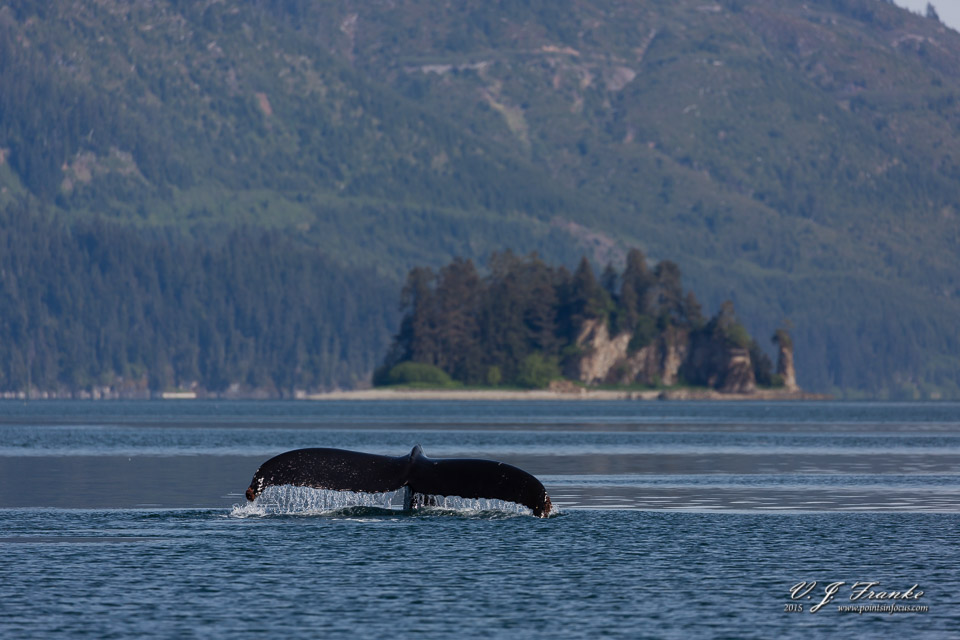
Canon EOS 5D mark III, EF 100-400mm f/4.5-5.6L IS II USM
400 mm, 1/1600, f/5.6, ISO 200
While I’ve taken backup bodies on every one of my Alaska trips, it’s been more out of force of habit than any real need. Moreover, in every case, I’ve never ended up using the backup body either.
A Second Body
The other option is a second body that you’ll regularly use. The intent here is to expand your capabilities or make changing between lenses faster.
For example, you might want to take a high FPS crop camera (like a Canon 7D mark II or a Nikon D500) to keep with a long lens for whales and wildlife, while you have a wider angle lens on a lower slower full frame camera (like a 6D mark II or a D610), for landscapes.
Because a secondary body is going to be used regularly, I don’t remove the creature comforts like I would for a backup. Of course, this means increased weight but that’s generally offset by the better usability.
Alternatively, depending on what you’re going to be doing, another approach to a secondary body would be one that’s much more compact. This can be extremely useful for some excursions with moderate activity but you still want to get good images.
As an example of this, on my first cruise, we did a glacier flight and hike. I took my main camera for this, a EOS 5D mark III and a pretty bulky 24-105mm f/4L IS USM lens. However, a lot of what I shot on the glacier was shot at wider angles, and the camera was something I ended up worrying about when I was getting down by the glacier melt pools. Knowing what I know now, a more compact camera like an EOS M3 with a EF-M 22mm f/2 STM pancake lens or a compact EF-M 15-45mm zoom would have been preferable.
The Multi-Camera Sweet Spot
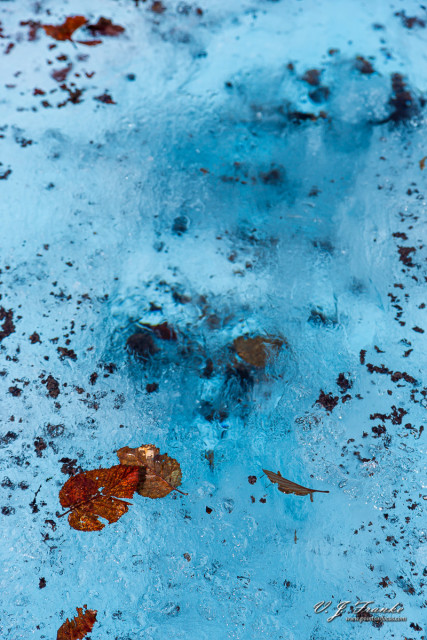
Canon EOS 5D mark III, EF 24-105mm f/4L IS USM
98 mm, 1/640, f/5.6, ISO 100
With all this talk about features, performance, and multiple bodies, it’s worth talking for a moment about whether there’s a “sweet spot” in the market that makes things easy for the multi-camera traveler. Fortunately, there seems to be, and the best part is that it covers a wide price and feature range, so there are a lot of options.
My primary concern here, when it comes to talking about a multi-camera sweet spot is how well multiple camera options mesh together. On one hand, this covers the range of features and capabilities that you can get form different cameras. However, an additional concern is how their ancillary accessories, like batteries and chargers, mesh.
Right now, the sweet spot seems to be the upper-middle range cameras from pretty much all of the camera makers. Whether they’re APS-C or full frame, the middle of the road bodies seem to offer the best balance of performance, cost, and ancillary device support.
For example, all of Canon’s cameras from the 60D to the 5DS r, 5D mark IV, and EOS R, all use the same LP-E6 series batteries. This gives you camera options from 20 MP at 10 FPS, all the way to 50 MP at 5 FPS in the camera space, while still being able to use one set of batteries, chargers, and accessories.
The same is true for Nikon’s mid-range. Every camera from the D7000 to the D850 and Z7 use the same EN-EL15 series batteries.
Commonality of battery and charging infrastructure, is something I’ve written about at length in the past. Again, this comes from personal experience. On my first cruise I took my EOS-1D mark III as a backup to my 5D mark III. These two cameras use completely different batteries and chargers with no commonality between them at all. As a result, I ended up packing the extra bulk of the two different chargers and ultimately never needing the bulkier of the two.
On subsequent trips, I’ve had cameras with compatible power systems, and have shaved a both weight and bulk out of my bags and even gained a bit more redundancy by having more batteries of the same type at hand.
Mirrorless or Not
Mirrorless cameras are certainly the new hotness. Some would insist they’re they only way forward.
Personally, I take a much more measured approach to my photography tools. In fact, the value of a DSLR was driven home to me while shooting wildlife in Yellowstone National Park. Where I could can spend a lot of time observing animals ready to shoot without draining your batteries.
Fortunately for mirrorless owners, Alaska isn’t a special case that really demands that one aspect of a DLSR.
To start with, I didn’t find that the shooting played heavily to the strengths of a DSLR in the way, for example, Yellowstone does. For whales, you can’t observe through the lens. You need the wide field of view of your unaided eyes to spot them as the surface, and then quickly bring the camera up.
For other things, like bears, the excursions inherently impose limits on how long you can sit and observe. This will be either because you only have a limited amount of time there (a few hours of most), or because the excursion will move along since it’s not designed to cater to the photographer who is willing to sit for hours for the best shot.
Put simply, while I shoot DLSRs, I don’t see any reason I’d feel constrained shooting a good mirrorless camera on an Alaskan cruise.
Buying or Renting New Gear
I know many people will buy a new camera in preparation for a trip like this. My dad this before his first trip to Alaska. If you do this too close to your cruise, you’ll have less practical experience with the camera, which is not good for working quickly and efficiently. However, there are some things you can do to get up to speed more quickly.
To start with, I always recommend going through some kind of formalized acclimation testing. My article Testing and Acclimating to a new Camera covers the process I use for every new camera I get. This helps me get a baseline feel for the camera’s performance range under controlled conditions.
I also recommend making sure you have time to get out and shoot with the camera and lenses some before you go on the trip. Field conditions expose different limitations than just the basic image testing does.
For example, as resolutions increase, you may find that you’re no longer able to get pixel sharp images handheld at the same shutter speeds you were able to on your older gear. This also applies to the handling of super telephoto lenses, even 100-400 class zooms, if you’ve never used a lens that long before.
Finally, don’t just practice with easy stuff. Make sure you throw some low light and challenging subject matter in (especially moving subjects to test the AF system) to make sure you have some practice with those cases since you might run into them.
Finally, if you’re making a major change in platforms or systems, such as moving from one brand to another, or from a compact camera to an ILC, make sure you build some extra time to practice with the camera into your purchase schedule.
Lenses
Lens selection is largely dictated by your own vision and style. That makes it impossible to simply say, take this or that. However, there are some broader points that can be addressed and you can use them to inform your specific choices.
When it comes to an Alaskan cruise, I’ve settled on only needing 2 lenses: a good sized telephoto zoom (I use a 100-400) and a normal or general purpose range zoom (I use a 24-70). I took a lot more gear on my first cruise, and I ended up not using most of it. On subsequent trips, I saved the weight and left all that stuff at home.
In practice, you can get away with even less than that. An 18-200 to 18-400 super zoom on an APS-C camera, would cover all of the bases in one lens.
Trying to go one lens with a full frame camera is a bit more problematic. While they make lenses with a 28-300 mm range, the 300 mm telephoto end is not really long enough in my experience.
Bridge cameras are also entirely reasonable to use, and in some ways can have their own advantages. Many modern bridge cameras have some incredible zoom ranges, with full frame equivalent focal lengths out 3200 mm on a full frame camera.
However, keep in mind that a lot of zoom isn’t just better. Lenses with longer zoom ranges are more complicated to design, and have more compromises made for image quality. Moreover, at a minimum, longer lenses used to cover longer distances make images more susceptible to atmosphere distortion such as heat waves. Under the right conditions this can be a problem even at much more modest focal lengths.
What I haven’t found especially useful is the ultra-wide angle range (<24 mm on full frame). I took one on my first trip, and never actually used it. While there may be exceptions on some shore excursions, I never ran into anything in Alaska that really demanded an ultra-wide angle lens.
As I touched on the Subject Matter section on landscapes, the landscapes from the ship tend to be wide but not overly tall due to the distances to shore. Going for a single shot image that fits everything in tends to frequently result in a lot of pixels being used in the sky and sea, and the mountains and glaciers being quite small in the frame.
For shooting landscapes, like those in Glacier Bay, I’ve found the results from a stitched pano with a moderate telephoto focal length (like 70-100mm on full frame) produce much better images.
On the other end of the spectrum, how much of a telephoto lens you’ll want or need is going to be dictated by how interested you are in taking pictures of wildlife, what kinds of wildlife you want to shoot, and what your camera’s format is.
Again, as I noted earlier, going back 400mm has diminishing returns in utility. That said, if you have a compact lens that’s reasonably light weight, like Nikon’s AF-S Nikkor 500mm f/5.6E PF ED VR, or any of the myriad of 150-600 mm zooms that would be fine. However, for a cruise a big super telephoto prime, like a 600mm f/4, isn’t going to help a lot.
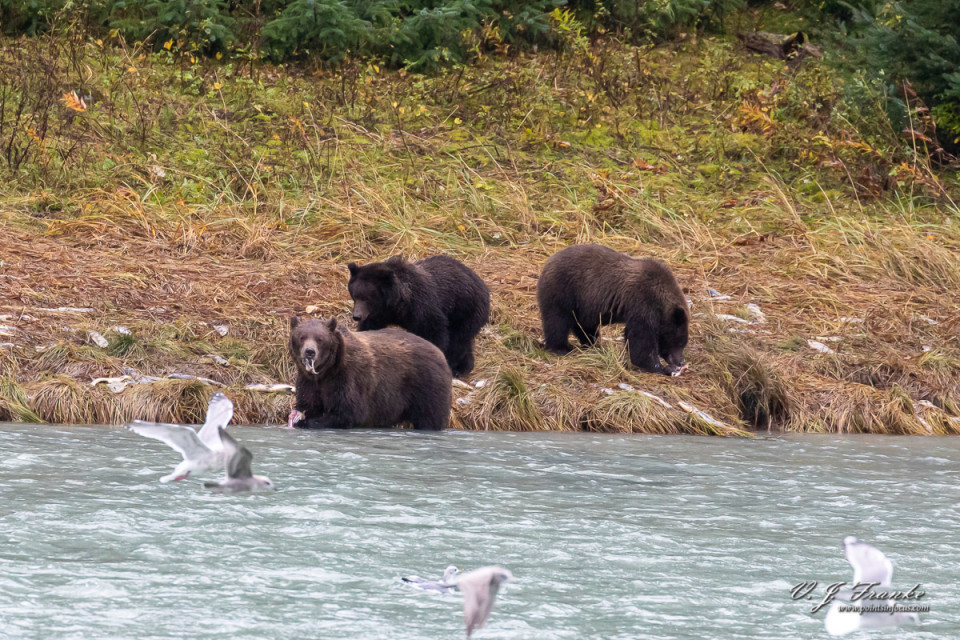
Canon EOS 5D mark IV, EF 100-400mm f/4.5-5.6L IS II USM, EF 1.4x III
560 mm, 1/1000, f/8, ISO 6400
Take a Teleconverter or Not?
I almost always carry a 1.4x teleconverter (often called an extender too) with me when I’m carrying a telephoto lens. Using one ins’t free, as the teleconverter degrades image quality and increases the aperture (1 stop for a 1.4x and 2 stops for a 2x).
The up side is that, at least in my testing, the image quality loss of using the extender, and a stop higher ISO, is less than the image quality loss in cropping after the fact.
That said, the caveat with teleconverters is that you can’t really skimp on them. Cheap teleconverters will destroy the image quality of even really good lenses. Consequently, stick with the best ones you can get. In my experience, that means first part ones from the brand of your camera or lens.
Prime or Zoom?
You’ll also notice that in the vast majority of this discussion about lenses I’ve been talking about zooms. There’s a number of considerations that have to be taken into account here.
Part of the question is personal preference. I vastly prefer zooms over primes (single focal length lenses) because of the flexibility they offer in adjusting a composition and adapting to the situation in front of me. However, in order to get that I do have to give up some potential image quality.
Being on a cruise doesn’t help the case for primes either. One piece of advice that’s often given by prime users, is that if you want a different composition, you can zoom with your feet, moving closer or further away from the subject. This doesn’t really work when you’re shooting from a moving boat.
Additionally, one of the biggest advantages of prime lenses, having a very fast maximum aperture, isn’t really that much of an advantage here.
Combining those factors, I don’t really recommend relying on primes for an Alaska cruise. Though like most things, you can certainly use them if that’s what you have or you really prefer them to zooms. I certainly wouldn’t go out and buy a zoom or bunch of zooms just for a cruise if all my lenses were primes.
As for going with primes, I’m not sure what I’d recommend specifically. However, there’s also a good chance that if that’s what you shoot with, you’ll be able to make up your own mind based on my descriptions of the shooting situations and the camera settings listed with the images in this post.
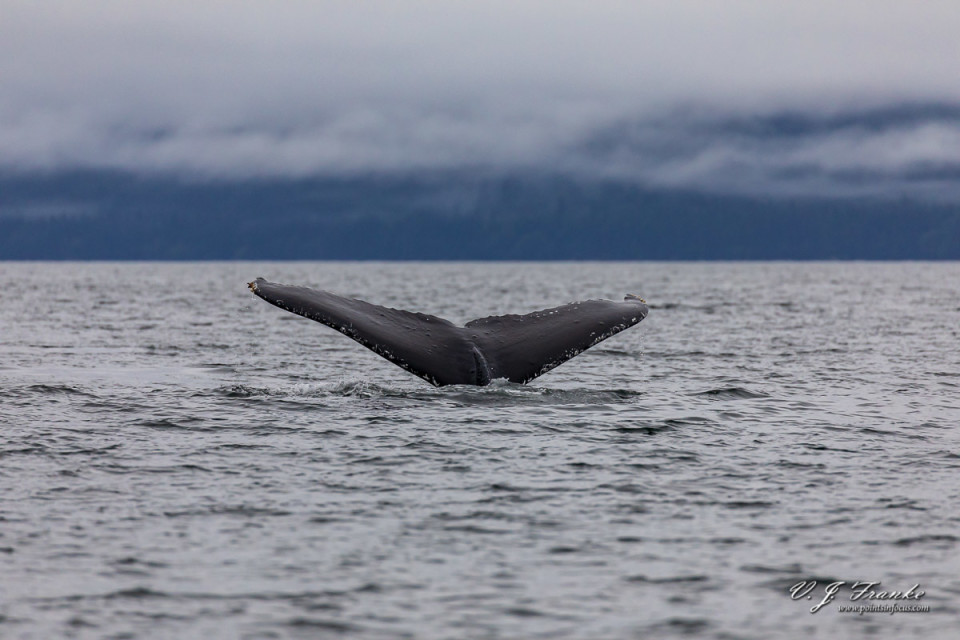
Canon EOS 5D mark IV, EF 100-400mm f/4.5-5.6L IS II USM
400 mm, 1/1250, f/5.6, ISO 1000
Full Frame Lens Recommendations
If you’re shooting full frame, like I do, I think you can get away pretty easily with a a 24-70 mm or 24-105 mm zoom for your general purpose task and a 100-400 mm zoom for wildlife and to reach out from the ship while you’re cursing.
As far as f/2.8 versus f/4 goes, I don’t see a lot to favor either option. For landscapes you’re generally going to stop down anyway. Even for something like shooting portraits of your family you’re not going to want to have ultra shallow depth of field, as you’ll want to preserve the context of being in Alaska. Moreover, I found very little need for the fast aperture for purely light gathering reasons.
As for the telephoto, I would recommend a 100-400 class zoom, or a 150-600 class zoom. A 70-300 can be effective for some things, like whales, but in many cases it’s going to be too short for bears.
Crop Camera Lens Recommendations
Crop users, both APS-C and 4/3rds, have I think some real advantages in some ways due to the smaller frame size.
For a general purpose lens you’ll still want something roughly equivalent to a 24-70 or 24-105 on full frame. So for APS-C users, it would be something like an 18-55, 16-85, 18-135 or something like that.
The general purpose zoom can be paired with a 70-300 for wildlife. This works on APS-C and 4/3rds because the crop factor gives the same field of view as a 450 or 600 mm lens on a full frame camera.
Alternatively, crop camera users can also opt for a single lens solution using one of the myriad of 18-250, 18-300, and even 18-400 super zooms. The compromise here is that these lenses have poorer image quality than shorter range zooms.
Bridge Cameras and Compacts
Bridge and compact cameras are a space that’s outside my familiarity zone. However, I’ve known some seriously interested novice photographers that used them because it was way cheaper than a DSLR.
The good news is, and I pointed this in previous sections, that most modern bridge cameras provide enough focal range that you can certainly use one as your cruise camera.
What really amazed me when I started writing this section is that you can do pretty well with a slim compact camera as well. Canon, Nikon, Sony, and Panasonic all have compact cameras with 30-40x zooms topping out at around 1000 mm in full frame terms. While these cameras make even more compromises in terms of image quality due to their very small sensors, if you can work within their constraints they certainly are an option.
Camera Support: Tripods and Monopods
The vast majority of shooting I’ve done, both on the ship and on shore in Alaska, has been handheld
When it comes to choosing between a tripod, monopod, or nothing, my opinions have bounced around over time.
For a long time, I found that image stabilization was enough on its own and I didn’t really need a camera support to get sharp images. As I moved to higher resolution cameras and heavier lenses, I found that while IS helped, it didn’t seem as effective it was on my old 10 MP class gear.
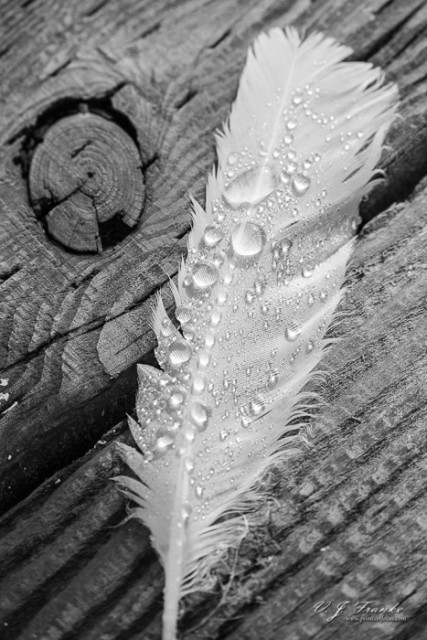
Canon EOS 5D mark IV, EF 100-400mm f/4.5-5.6L IS II USM
340 mm, 1/400, f/8, ISO 250
When I replaced my 100-400 with Canon’s mark II version, and gained the added weight that came with that, I stated using a monopod a lot more. In no small part, this was just to support the weight of the lens to keep me on target without killing my arms.
On my first Alaska cruise, I left the tripod at home and only took a monopod. My reasoning was that the boat would vibrate too much and the tripod would conduct that vibration to the camera. Having a forward cabin, vibration wasn’t a problem. On the other hand, what was a problem was having to constantly hold the monopod or lay everything down where nobody would trip over it became quite an annoyance.That said, one of the biggest short comings of monopods is that they don’t stand on their own; at least mine, and most, don’t. As a result, its difficult to do things that require both hands away from the camera without finding a place to put the camera down.
For this second trip, I took the tripod, and was vastly happier as a result. In fact, I almost never used the monopod, and I wouldn’t take one back again. Shooting from our room’s balcony, I mostly kept the camera on the tripod if I was going to be shooting for any length of time.
That said, the vast majority of shooting I’ve done both on the ship and on shore in Alaska, has been handheld.
If you already have a tripod, especially a light weight travel one, then my suggestion would be to take it. You probably won’t get much use out of it, but I’ve found it handy to have at time. Especially if you want to shoot video from your room’s balcony as you’re sailing.
However, if you don’t already have a tripod, you don’t need to run out and buy one, it’s just not that necessary on a cruise.
Miscellaneous Stuff
Aside from your camera and lenses, there’s usually some amount of miscellaneous gear you’ll normally have to support that. These are some of the tips I’ve found for what else you might want to bring that I haven’t already covered.
Bags and Packs
Camera bags are about as personal as it gets. It’s not just a matter of finding something that fits all your gear, but also what’s comfortable for you to use. Because of this, it’s impossible to make specific recommendations on what kind of bag to use. However, there are some things to keep in mind that are worth pointing out.
To start with, whatever you choose to go with, if you’re expecting to carry it around on shore excursions, rain protection is a good feature to have.
Most reputable bag makers take a multi-faceted approach to rain protection. It starts with a durable water repellent (DRW) coating applied to the outside of the fabric. DWR coatings provide protection by causing water to bead up and run off before it can penetrate into the fabric. However, they can wear off over time with use and handling.
Good bags provide a second layer of protection with a full water proof rain cover (or with a fully waterproof layer in the fabric itself). I consider this an essential layer of protection if you’re going to be in the rain for an extended amount of time.
If you’re using a low price bag, especially one that claims to be waterproof, I would strongly recommend testing in a shower or outside under a hose. I’ve personally seen quite a few low cost “waterproof” bags that leaked like a sieve when they actually got rained on.
Further, if you have an older bag, or want to add an added layer of protection to yours, you can spray it with a waterproofing coating like Nikwax’s Tent and Gear Solarproof(Affiliate Link) .
Personally, my ThinkTank Airport Commuter has been my go to Alaska camera backpack. It provides enough space for the two bodies and two lenses, as well as my GoPro, laptop, and tablet that I travel with. Generally I leave it in my stateroom and only take a body and lens with me when I’m going out on an excursions. However, if I expect to need all my gear, I will take the whole backpack. I’ve also used ThinkTank’s Belt System for carrying gear on excursions to keep my gear load down.
Rain Gear
Southeast Alaska is known for its rain and generally poor weather. Because of the weather, I’d strongly recommend some kind of rain protection for your camera. I would still recommend this, even if you’re using cameras and lenses that are weather sealed.
For rain gear, I’ve took both my ThinkTank Hydrophobia 70-200 and some disposable OpTech USA plastic camera covers (that I wouldn’t recommend). Though ultimately I ended up relying on the weather resistance of my camera and lenses a lot too, as sometimes it was simply impossible to put a rain cover on fast enough to stop the camera from getting soaked.
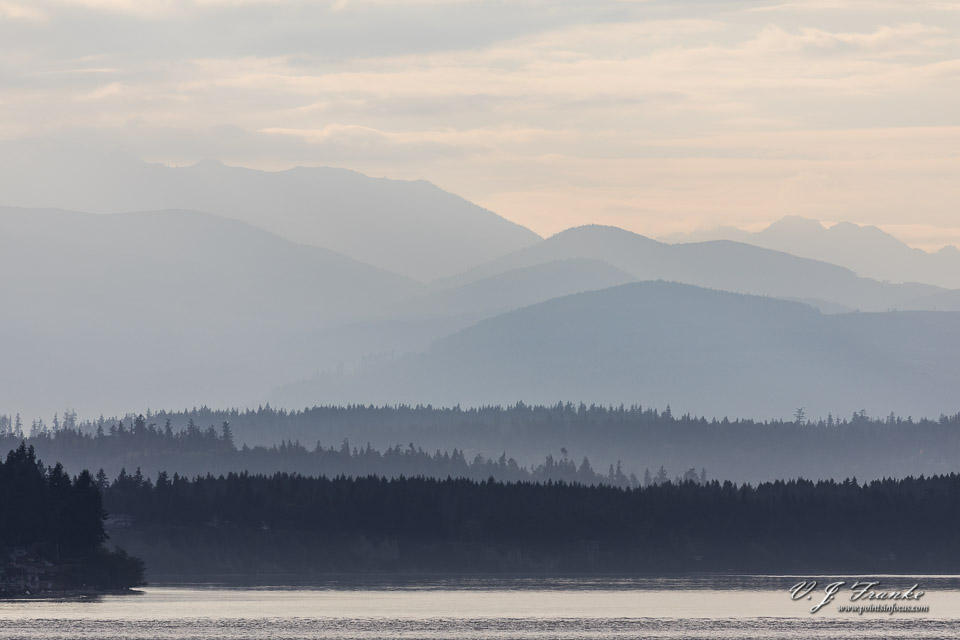
Canon EOS 5D mark IV, EF 100-400mm f/4.5-5.6L IS II USM + Extender 1.4x III
560 mm, 1/1000, f/8, ISO 250
Flashes
In a similar vein, I’ve never found a compelling need for a flash on an Alaskan cruise. I took one on the first trip, and never used it. This time I left it home, and never ran into a situation where I wished I had it.
As with most things, there’s a whole lot more to consider than what I’ve covered here. Details will obviously vary from photographer to photographer depending on your specific kit and vision. Though I hope I’ve laid out some broad strokes that can be useful for starting to plan around if you’re a serious photographer going on a regular Alaskan cruise.
Conclusion
Admittedly there’s a lot of information here. However, I hope its helped to pain a clear picture of just what kind of gear you really need to be effective as a photographer on an Alaskan cruise.
- Pack as light as possible
- You don’t need a specialized high end DLSR to get good images
- Consider taking lens to cover form ~24 mm to ~400 mm on a full frame camera or the crop equivalent.
- I’ve never needed a flash.
- A tripod or monopod isn’t necessary unless you’re going to shoot video from it.
- Be prepared for rain.
Comments
We are planning a non cruise trip to Alaska. I plan to take my 70-300 mm lens but wondered if I should invest in a newer, better telefoto lens for my Canon DSLR. Between the 24-105 mm and or 18-135 mm lenses would one be preferable based on your trips? I don’t want to carry too much weight because we will be hiking some but definitely want to have what I need. I enjoyed reading your blog post and would appreciate any help that you are able to give me.
Amy Bryan
Hi Amy,
Re., your 70-300, the first question on that is which one do you have, with a very close second being are you happy with the images you get or do you find them a bit lacking in sharpness/resolution/detail?
Canon alone currently has 4- 70-300s (6 if you count the 75-300) in their product line, and that doesn’t count the 3rd parties. Moreover, that problem gets somewhat tricky as, aside from the EF 70-300mm f/4-5.6L IS USM, they don’t tend to be consistently good or bad through their zoom range.
Honestly, I’m not really sure what I’d do in your situation. A lot of that has to do with personal preferences too. About the best I can say, is if you’re not satisfied with the sharpness/detail you get out of your existing 70-300, then it’s probably worth considering upgrading. However, to the best of my knowledge, the only consistently good 70-300 is the Canon EF 70-300mm f/4-5.6L IS USM, and that’s a $1300 lens (~$1000 if you go with a Canon factory refurb).
Re. choosing between a 24-105 and 18-135.
While you didn’t mention what camera you have, since you have a 18-135, I’m going to assume it’s a crop body like an 80D or Rebel.
On a crop body, I think my choice would easily be for the 18-135, at least assuming that you have a USM or STM version and not the original version. Image quality on Canon USM and STM versions, is reasonably on par with the 24-105 f/4L first gen, and usually better than the 24-105 f/3.5-5.6. Plus it has a wider working range, especially the at the wide angle end where the 24-105 really isn’t that wide-angle.
Hope this helps a little, if you have further questions feel free to comment, or if you would like to take the discussion to email, you can use the contact to send me an email, and I’ll reply to you directly. Also I hope you have a wonderful trip and get lots of great images.
Very helpful article, we are going in July this year (our 4th Alaska cruise) I shoot with an 18-400 Tamron and have a nifty 50 as well, D7500 body
I appreciate what you were saying about a wide angle as I was really seriously considering one but wondered if it would get any use and didn’t want to drop $400 on a paperweight
My girlfriend and I are going on a cruise/land tour, cruising from Vancouver to Seward on the NCL Jewel, followed by a land tour. I was hoping you could give me some advice on what photo gear to bring, or more appropriately what gear to leave at home.
My camera is a Canon 5D Mk III, which I will be bringing. I have a Canon 16-35 mm which will be staying home. My go to lenses are a Tamron SP 24-70 f2.8 and a Canon 70-200mm f/2.8L IS II. Recently I purchased a Tamron 28-300 f3.5/6.3. I’m trying to decide between the trade off of a single, lower weight lens vs. the higher quality of the two f2.8 lenses. I also have the first generation Tamron 150-600 f5-6.3 along with a Kenko 2x.
It’s tempting to just take the Tamron 28-300 and the 2x. The decreased weight of those two lenses are very tempting but I’d hate to get home and be disappointed because of the speed/quality of the lenses.
Last decisioin – whether to take my Canon 600EX II-RT
Hi Mark,
First off, I was on the NCL Jewel for my cruises, and I really liked the ship. I felt it was just the right size for Alaska, small enough to get in and up close to the glaciers, yet not so big that you were fighting 5000 people were trying to get off at each port.
As for the gear, so much of what you’re asking really depends on what you consider acceptable in terms of image quality.
For example, I wouldn’t bother with the Kenko TC, my experiences with their TCs have been pretty bad, and when you’re using a 2x that really hurts things. Moreover, TCs, especially 2x TCs, really demand the best glass you can put in front of them, and there will still be a noticeable lost in image quality. Consequently, I have a hard time thinking that an already slow 28-300 stacked on top of a Kenko TC would really be a good idea. Plus your AF is shot outside of live view, and ultimately we’re talking about an f/11 aperture which is going to hurt shutter speeds when you need them most).
Given my interests in wildlife I would probably want to take the 150-600. My experience on whale watching trips and shooting bears has been that 300mm isn’t quite long enough. Of course, if wildlife isn’t really your thing, then I’d leave it at home.
The hard question is 24-70+70-200 vs 28-300. Personally, I’d probably take the added weight of the two higher quality lenses just because of the image quality. While I’m big on keeping weight down, I’m more willing to compromise on weight than on image quality. Plus that’s about the size of my normal kit (24-70 + 100-400) for a lot of trips, and I don’t find that too heavy.
You’re on the right track though. My first trip I had a 16-35/2.8, a 24-70/2.8, a 24-105/4, a 100-400, a flash and two bodies in my backpack, and that was way overkill. The second trip I did with the 24-70 and the 100-400 and I felt that gave me just about the right amount of capabilities and weight to be happy.
I hope that helps some. Unfortunately, there’s a huge personal component in terms of acceptable IQ, your vision as it pertains to your images, and the kinds of subject matter you’re after that makes it hard to just say, “take x.”
Hi Jason, Considering my gear for spring Alaska cruise and trip to Denali. Is it worth taking both the 70-300L and the Sigma 150-600? Camera supports: monopod, tripod and/or bean bag?
Thanks!
Hi DJ,
With respect to your lens question, I would say if you can spare the weight and room take both. I haven’t been to Denali, but if it’s anything like Yellowstone when it comes to wildlife, you’ll want the 600’s reach. For most stuff on the cruise, you can probably get away with the 70-300, especially if you’re using an APS-C camera.
One nice thing about a cruise is that you can be a little more judicious with the weight of your gear since you can leave stuff in your room. Take both, and only take the lens that makes the most sense for the day with you on that day.
For camera supports, as I said in the article, I only took a monopod on my first cruise, and I found it got in my way more than it ever helped. I took a tripod the second time around, and was much happier. At the time I didn’t have a convertible tripod, like my Benro FTA28CC, in a lot of ways I would consider this to be the most ideal solution.
As for a beanbag, I’ve never been a big beanbag user, so I couldn’t really say. It might be more useful in Denali than on the ship or the ship’s excursions, but again not having been to Denali yet, I don’t know.
Hope that helps some.
Alaska cruise coming up in July. I have a Canon 80D. I’ll be renting a telephoto lens for nature/wildlife shots from a local shop. Choices are a “SIGMA 150-600MM F/5-6.3 DG OS HSM CONTEMPORARY LENS FOR CANON” or a “CANON EF 100-400MM 4.5-5.6L IS II”. Which would be your choice?
Thanks in advance!
Hi Rod,
Given my experience, I’d go with the 100-400.
When I was on my cruises, I found that I never felt really pressed for more than 500-600mm on a full frame camera (basically a 100-400 with a 1.4x TC). On your 80D, you get that angle of view form a 400mm lens. On the other side of the zoom range through, there were a number of times where I would be shooting all the way back at 100mm. In fact, on one whale watching trip, I missed a number of shots of a feeding whale because I had a teleconverter on my lens and couldn’t zoom out wide enough to get it all in.
Also something to consider, your 80D’s AF system will focus at f/8. If you’re really concerned about not having enough reach, you can rent a Canon 1.4x III TC and keep it in your bag. It’ll give you a 140-560mm lens, for less weight than the Sigma.
Taking the Jewel cruise (Vancouver to Seward) in June. I have a Sony A9, the 16-35 f4, the 24-70 f2.8, and the 70-300. Unfortunately the Sony TCs do not work with the 70-300. While a 100-400 would be nice, the weight savings is significant. Right now, I am thinking the 24-70 and the 70-300. Have also considered buying the 24-105 f4 and taking that instead of the 24-70, since I don’t plan on taking many photos inside the ship, so the f2.8 is not as big of a concern. Do you think I would be missing out on anything?
Hi Ronald,
On the short end, I never shot inside the ship either (out side of some shots of our room, which I was fine doing at higher ISOs anyway). Moreover, if you’re not shooting “fine art” stuff in the ship (e.g. family keepsake/memory images), then f/4 and a bit more ISO is fine for that.
On the long end, looking through my images, I have a lot that I ended up shooting between 301 and 560 mm. In a lot of cases on the wider end of that (300-350 mm), I would have been fine if the range stopped at 300, but there were a number of images that I shot that needed all the lens I could get. One way or another, in going back and looking, most of the images in this article were shot at >350 mm.
That said, it really depends on what you’re going after and how your “eye” composes the images. For whale watching, I think 300 mm would be fine — most of my whale stuff, is less than 400mm. If you’re doing bear tours, it’s going to vary widely with the port and tour. Some you’ll be okay at 300mm; in other cases, even 1200mm wouldn’t be enough.
If wildlife, especially bears, is an objective for you, I think you’d be better off buying/renting the 100-400 and a TC and taking the 24-70 you have. If you’re not going to go after bears, or are happy cropping more, then the 70-300 would be ok (it’s a tough call though, as there’s a big personal taste/preference factor). Personally, I probably wouldn’t buy the 24-105/4 just for Alaska unless I already was thinking about getting it anyway.
That’s probably not as clear of an answer as you were looking for, but I hope it helps some. Feel free to reply further if you have any more questions.
Main reason I gave the 24-105 a thought was having some overlap on focal length. I have shot whales a number of times on Maui, and agree 300 is long enough. At my age (70), I am not sure I want to handle a 3 pound lens. LOL. So I think I will stick with the 70-300, which I really do like my nice sharp copy. Thanks for the input and your articles, which I found very informative for our particular trip.
Given your situation, I think the 70-300 is probably the better choice. You can always crop some anyway.
Re. the 24-105. I took one the first trip, and the extra reach was certainly useful over a 24-70. Subsequently, I don’t use mine as much, but that comes down to Canon’s first gen design not really providing the resolution I want to see on my cameras; which isn’t a problem that affects you.
If buying one isn’t a problem, and given your situation re. the 100-400, then I see no reason not to. You save something like 9 ounces and get a good bit more extra reach without having to switch lenses.
Hi Jason,
Going on a cruisetour in July and wanted to see your advice on equip. Primary interests are wildlife and landscapes.
I currently have a 5d mark ii with 17-40L f4, and 24-105. Am thinking I’ll try to get a 100-400L IS (older version) for around $600-700.
Question – also considering a new 7d mark ii instead of the 5d. Wondering if the extra length from the crop sensor when using the 100-400 lens is worth the trade off vs full frame? Or could take both cameras and leave 24-105 on the 5d?
Hi Greg,
Regarding the 7D mark II, versus the 5D mark II. I think the 7D2 is a significantly better choice for wildlife all things considered. To start with for wildlife, the 3.9 FPS frame rate and antiquated AF system in the 5D2 is going to be a hindrance. If you look at the video clips in the behavior section (linked) of my humpback whale photography article, they’re played back in real time from a 6.5-7 FPS camera. There’s a lot to miss going down to 4 FPS, where the 7D2 is a 10 FPS camera so you’ll have better chances of getting a really good frame.
Moreover, in in addition to the extra reach the center AF point on the 7D2 will work with the 100-400 (mark 1 or 2) and a 1.4x TC (mark 2 or 3). So not only do you get a 640mm equiv angle of view out of the box, but you can get 40% more if you have an extender too.
Looking at the performance data, the 24-105/4 on the 5D2 will produce better images than the 17-40/4 on the 7D2. However, the 7D2 will be a better option for wildlife with the 100-400 given the better AF system and FPS.
Honestly, I don’t really see a huge problem with taking both. If you’re not running battery grips and L-plates, neither of those bodies are unreasonably heavy, so the cost in weight of carrying both isn’t going to be horrible. They also use the same batteries, so you don’t need separate charging infrastructure either (which was a real pain for me when I was using a 1D and a 5D). Plus having 2 bodies does give you a backup if one happens to fail.
One thing, with the first gen 100-400, make sure that you have a rain cover for it. Either the ThinkTank or Ruggard ones linked in the article should work well enough. The first gen 100-400s are not designed to be weather resistant, and you really don’t want to get them wet.
Hope that helps. Feel free to reply back if you have any further questions or comments.
Thanks for the quick reply and the good info. Much appreciated!
Hey Jason,
Great article!!! One question I do have, having a choice of an APS-C or full frame which would you opt for?
Full frame. It’s what I have, and what I’ve been shooting for the last 7 years.
That said, there’s a lot of history and caveats that come with that position. Nor is it something I’m super dogmatic about, especially when it comes to shooting video (I’ll shoot video with my iPhone or a GoPro just as readily as I’ll shoot with my 5D4, in fact more so in many cases).
Going on an Alaskian cruise for the landscapes pics .Do you think i will be okay to take my Panasonic Lumix FZ82 bridge camera or would i be better with my Nikon D3500 with 18-55 mm kit lens.
Just ‘starting out photographer’
In looking at the specs for the FZ82, I think it would be fine. The D3500 has the potential to make technically better images. However, if you only have the 18-55 kit lens, based on my experience that’s going to limit you in a lot of cases, especially shooting from the ship. I found that I shot a surprising number of landscapes on my cruises at 100 mm or longer focal lengths.
Keep in mind, that when the ship is sailing, the shore, and thus the landscapes, will quite far away. This includes places like Glacier Bay (as an side, if you’re sailing before September 1, your ship won’t be able to sail down the John’s Hopkins inlet, the closest view you can get will be form a location similar to where the pano in this article was shot). If you want to pick out details, like waterfalls, boats, cabins, etc., you’ll need to zoom quite a bit. You can do that with the Lumix, you’ll need another lens to do that with the D3500.
Hope that helps. If you have any more questions, feel free to ask.
Thanks for those constructive comments As an amateur photographer it helps . Didn’t want to carry the Nikon DLSR and two or three lenses around if I don’t need to as I am restricted with luggage from the U.K. too So I shall stick with the FZ82 and hopefully get some good landscape photos if a beautiful country
Wow…what an absolutely gorgeous and precise article that answered all my questions. Incidentally, we’re travelling on the NCL Jewel as well.
I am planning to carry my old Nikon D50 with the 70-300 AFS VR for reach (450mm on APSC). And my newer pocketable Canon G7X II (24-70) for everything else. Thoughts on this combination?
I was also considering buying a Nikon Z6 kit since my D50 is about 15 years old now. But I’m not entirely sold given the expense. I would also have to buy new XQD cards and let my 20+ SD cards rot.
You can certainly do the job with your D50 and G7x II. The D50 though is quite long in the tooth, and that’s going to hurt for both wildlife and in low light conditions.
A Z6 would be a huge upgrade across the board in all respects to both cameras. Moreover, if you shoot with the 70-300 in DX crop mode you’ll get 10 MP images which is twice the rez of your D50 (and the quality will be substantially better too). The XQD cards are a bit frustrating right now, but their costs will come down eventually. The format is now a standard, CFExpress, and Nikon has said there will be a firmware update for the Z6 to support the standard soon.
Personally, I’d really consider upgrading. Amazon has a promotional bundle going right now for the Z6, 24-70mm f/4 S and the F to Z Mount adapter, for $2369, $250 cheaper than buying the kit separately (full disclosure, as an Amazon Associate I earn from purchases made using this link). The sweet spot for XQD cards right now seems to be the the Sony G series 120 GB cards. Amazon wants $196.27, which works out to $1.64 per GB.
Also, in looking through my archives, the most I’ve shot in Alaska was 130 GB — I would have shot more than 100 GB the last time, but I got sick while we were in Glacier Bay. With a little care, especially if you use compressed raw, shoot wildlife in DX mode, and maybe do a little editing in camera, you should be able to get buy with a single 120 GB card. It would be tight, but I think it would be doable. Two cards would pretty much cover you for most things aside from shooting a lot of video.
Also, if you do upgrade and shoot raw, make sure you turn on compression (Menu -> Photo Shooting -> NEF (RAW) Recording -> NEW (RAW) Compression). My recommendation across the board for Nikon users is to use regular compression not lossless compression. Additionally if you’re real concerned about space, you can knock the bit depth for the raw files down to 12-bit, which is the same as your D50 uses. However, if you do that you will lose some dynamic range below around ISO 250.
Hope that helps.
Hello, Jason,
Thanks a bunch for this wonderfully written and extensive article! This has been an amazing read and that’s an understatement.
We may be traveling to Alaska next May, and I’ve been wondering what to carry.
I have a 5D4, 100-400 Mk 2 and the 1.4x Mk3 and a 24-105 f/4 first gen which seems like the sweet spot kit.
My only problem is the weight of all this because on previous trips my back and hurt badly after using the 100-400 for a full day, and a cruise would be 7-8 days.
So I was eyeing the Panasonic G9 + Leica 100-400 combo, which I would pair with the 5D4+24-105.. the idea being to use the Leica 100-400 for the long shots and the 5D4+24-105 for stitched panos.
But reading about the low light conditions has made me wonder if that’s the right choice. DXO mark doesn’t have anything about the dynamic range of the G9 yet.
I would appreciate your thoughts about (a) the above combo for Alaskan conditions , and also (b) whether you primarily shot from the cabin, or did you use the Sun deck for most of the shots.. the reason for the second question is, carrying two bodies on the Sun deck would be a hassle (my husband can help carry the second body of course :) )
Thanks so much again for writing this article!!
Hi Tia,
Well, fortunately for you next May is a ways away, so there’s still time to see how the G9 shakes out, I can’t believe that DXOMark won’t have test results for it sooner rather than later.
I’ve also had good luck with the weather in May, though I very well could have just been super lucky too.
Based on the pictures in the review on Imaging Resources, I personally would have a hard time with that knowing what my 5D4 would have been doing.
But I wouldn’t call that advice… considering the context here; I replaced my backup 5D3 with a second 5D4 because the 5D3 just wasn’t as good (and the 5D3 looks marginally better to me than the G9 at equal ISO based on Imaging Resources images.)
I’ve shot mostly from my balcony. Though, I’ve sailed primarily on the NCL Jewel, and had a forward penthouse stateroom where the balcony is forward facing (directly under the bridge, with a 180° field of view forward and to both sides). So shooting from the room was in most ways preferable to shooting from the sun deck.
With a normal side suite, I’d probably go for the sundeck or the promenade/boat deck where I could keep moving from side to side as the light and conditions changed.
That said, if I’m shooting from my room, I’ll setup a tripod and let that carry the camera’s weight. I’m much less willing to do that in a public space, I don’t need someone to trip let alone trip and break my gear. That said, a monopod works okay, as long as you don’t need to set it down a lot.
On the whole, I’m not a huge fan of splitting systems the way you’re suggesting. I use to shoot with a 1D and a 5D — and yeah, it’s not quite the same — but even just having to deal with two different kinds of batteries and chargers was a huge hassle.
Hope that helps, at least a little.
Thanks for sharing such useful tips. In addition, don’t use the tripod on board a ship. Period. You’ll get blur pictures due to low frequency vibrations from the engine. Do make use of image stabilization whenever possible. Also carry a tripod if you wish to shoot stitched panoramas, which are an honest way to go wide without including an excessive amount of sky and dirt. Wildlife requires careful stalking and really long lenses, neither of which are practical on this sort of vacation.
Hi there. I am a serious amateur photographer and am booking my first ever cruise to Alaska this coming summer. Can you recommend a good part of the ship to book a cabin with a balcony for shooting scenery, etc. away from the crowds (apart from an unobstructed balcony view)? Thank you! Someone suggested an aft cabin with balcony but I would think other than nice pictures of the ship’s wake I would be taking my gear elsewhere all the time. No idea if I will have motion sickness, lol. Thank you.
Hi Darlene,
So that's actually quite a challenging question to answer, as some aspects of that would have to do with knowing the route of your cruise and the ship you're considering sailing on.
From a general sea sickness perspective, cabins at the rear of the ship move less than cabins at the front. So if you're really concerned with sea/motions sickness, you might want to favor something towards the back of the ship regardless.
That said, of the cruises I've done, my favorite rooms have been on the Norwegian Jewel class ships at the bow on decks 9 and 10; with the center two rooms on deck 10 being the best due to the large window and well covered balcony. These rooms give you a 180 degree view forward from the balcony.
Plus, I’ve found that the kind of people that book those rooms tend to be photographers, or very interested in spotting wildlife and scenery and I’ve found that there’s generally been a nicer level comradery with the people there in the neighboring rooms calling out stuff they spot, and generally being out and spotting things. (Though it is at the front of the ship, so it is cold and you have a near constant 10-20 knot wind chill factor.)
As an aside, in these rooms, I always mount a GoPro in the corner of the window where it can record a time-lapse 24/7 looking straight ahead of the ship 24/7 for the duration of the cruise. Makes for an awesome video when you get back to be able to see everything the ship and captain saw.
Unfortunately, I don’t think any of the other cruise lines do forward cabins, and even the newer NCL ships only do them as owners suits in the Haven, so they’re big money and way high up.
So the question really comes down to height off the water (deck), and side of the ship (port, starboard, or rear facing).
As for height off the water, I personally would rather be lower than higher. The last cruise I was on, we were on the top deck of the NCL Joy, and anything in the water near the ship was way far away from a photographic perspective. Though it was somewhat amusing looking down on all the other cruise ships in port.
As for side, in general, you’ll get good stuff from either side. That said, a couple of notes. If the ship is doing Glacier Bay. Margerie Glacier is off the port side when the ship sails up the Tarr Inlet. What I’ve found is that more frequently than not ships will sail up the Tarr Inlet, stop in line with Margerie Glacier, sit there with it off the port/left side for 20 minutes or so, then rotate 180° and leave the inlet. So basically if you’re in a room on the starboard side, you have to go to one of the public spaces to see the glacier for any length of time, which is kind of necessary if you want any chance at a calving shot.
Also, easily the best glacier in Glacier Bay photographically is the Johns Hopkins Glacier, you can get nice shots from the head of the inlet, but it gets better closer up. However, the inlet is closed to cruise ship traffic until September 1.
I’ve never personally done a rear facing room, and I’m not sure I’d want to. For scenery, I’ve always ended up shooting either ahead or off to the side. Behind the ship you do run into the wake disturbing the water. Form a wildlife perspective, you’ll probably get very little, as almost everything that can swim is going to dive and get out of the way long before you’ll be in a position to see or shoot it.
Hope that helps a little.
Hi Jason: Thank you so very much, it was very helpful. We are probably booking a Celebrity that goes the inside passage and up to Hubbard Glacier. I am requesting a balcony, starboard cabin that can be from midship to towards the stern, as well as deck 6 or so (not high, not above the engine room). I doubt we will go HAL as it is a bit more money…they seem to do the Glacier Bay tours on 7 day trips, while Celebrity does Hubbard on the 7 day trips. I don’t doubt I will be moving around a lot for photos, but I thought early morning and evening might be good from a balcony, or if I decided to just nurse a libation and watch the world go by, close to my Fuji. The GoPro idea is really cool! Thank you! I don’t have one yet…. This is our first trip so I don’t know how much wildlife I will see with regular ports of call and all, but am hoping for the best. July, August or September possibly. What time of year have you been? Thank you.
So a couple of further thoughts.
In Alaska in May though August, early morning is ~3-4AM, and late evening is ~10-11 PM; and it doesn’t really get super dark at all. On my first trip (mid May) I ended up being absolutely exhausted when the ship got back to Seattle as I was getting like 3-4 hours of sleep a night, if that. You need to manage your sleep as much as you can, or you’ll be absolutely destroyed half way through the trip.
Check out The Photographer’s Empheris (I use the app, I have nothing to do with it otherwise) either on your computer or get the app for your phone. It’s super handy being able to figure out sunrise/set times and where the sun will be at various times during the day. Also, as things get closer, you can use a site like marinetraffic.com’s ship tracker, to follow the ship you’ll be on, or a sister ship sailing the same route, to get a good idea where things will actually be. Honestly, it doesn’t hurt to study some topo maps and marine charts (try caltopo.com) before you go to get a feel for things.
Regarding wildlife, you’ll see a reasonable amount from the ship itself. Most of it will be quite far away, but with a reasonable lens you can get stuff. Both the bear on the shore, and the humpback whale breaching pictures in this article were shot from the ship while it was underway. It’s not reasonable to see around a whale an hour, plus seals, and porpoises well within photographic distance form the ship. On my last cruise we also saw two orcas, though I didn’t have my camera handy at the time.
As for wildlife in ports, Bald Eagles are almost a guarantee. They’re everywhere. Most of the ports will have decent whale watching excursions, and for those it’s rare not to see whales. Though don’t expect orcas, you’ll almost certainly see humpbacks, but orcas are a rare treat in the Alexander Archipelago.
Bears are a bit more of an open question, as they really depend on the salmon runs in most cases. The Alaska Rain Forest sanctuary in Ketchikan, if you’re stopping there, is a good place to see and photograph black bears. I’ve seen that go both ways; one trip it was amazing with bears running around chasing fish, the next trip the fish weren’t there and neither were the bears.
I started doing a continuous time-lapse with a GoPro after I realized how much I was missing trying to take pictures. Remember, you can either go somewhere or go somewhere and take photos; but you can’t do both. Know the limits of your gear, and make sure to spend some time enjoying the scenery and not just constantly looking through the viewfinder.
My trips have generally bookended the cruise season, so early in May, or late in September early October. With the big 4000+ passenger ships sailing up there now, things can get pretty crazy in the towns during peak season.
Also, IMO, if you can swing it do a helicopter glacier flight seeing and walk tour/excursion. It’s not that great for photography, but the experience is definitely epic.
Thank you for this article it was so helpful! I’m actually going on an Alaska Cruise in June and I’m investing in a camera for it (something I’ve wanted for a while so not just for this!)
As an entry level camera I have been recommended the Panasonic Lumix DMC-GX80/85 with 12-60mm and 45-200mm lenses. My only concern is whether this will be far enough. I have heard that 400mm is really the minimum required to get any decent photos of wildlife on the shore but the next one up 100-300mm is obviously quite a price jump!
What would you personal recommend from your experience?
Hi Nicola,
I’ve made it a point to note the camera, lens, and focal length with every image in this article, so you can use that as a point of reference. Though note, I’m shooting with a full frame camera, and your Panasonic gear has a 2x crop factor, so you’d get the same composition from half the focal length (e.g., when I shoot at 400mm, you get the same composition at 200mm).
Also to echo what I said in the article, my experience has been that anything I was really happy shooting was shoot-able with a 400mm (200mm for you) or less. When things were beyond that, they were either so far beyond it that it wasn’t really worth shooting at all, or were otherwise pushing the boundaries for a good image anyway (start running into atmospheric distortion issues).
Personally, I’d probably want the 100-300 just in case. Since that covers the full range I’ve used with my 100-400 and the 1.4x teleconverter. That said, I’ve had the ability to take something longer, like a 500mm or 600mm prime, and I’ve never felt I needed something like that enough to take one.
That said, Olympus has a micro-4/3rds mount 75-300 that’s slightly less expensive that Panasonic 100-300 (it looks like $450 versus $650). You should be able to use any micro-4/3rds lens on your camera.
You could also consider renting a Panasonic 100-300, or even a Panasonic 100-400, for your cruise. I’m not personally a huge fan of renting glass, but it is justifiable if it’s a lens you otherwise wouldn’t need or use.
Hope that helps, if you have any more questions feel free to ask.
Hi Jason,
My husband and I are doing an Inside Passage cruise with Celebrity the end of August for our 25th anniversary. I was wondering if you had any advice on how to make the most out of my Sony DSC-HX350? Until a year ago I hadn’t done much photography in almost 10 years and that was an old Canon Powershot A480. Most of what I have taken in the last year has been landscapes and I use Aperture priority quite often, however I have experimented with Shutter priority mainly for waterfalls. I was wondering on the best settings to use for both landscape and wildlife (making a visit to the Raptor Centre in Stika).
Hi Karen,
First off, congratulations. An Alaskan cruise is a wonderful way to celebrate a 25th anniversary.
As for getting the most out of your camera, well that’s a huge rabbit hole and it’s really going to depend on specific situations. You can run into everything from clear skies and lots of light to rainy overcast days under a forest canopy with very little light at all. So you have to be flexible with both your expectations and your technique.
That said, for wildlife the go to recommendation is to insure you have reasonably high shutter speeds. 1/1000 is often recommended, you can get away with 1/500 in some cases, but expect there to be a lot of misses due to subject motion. For those cases, shutter priority is usually the ticket.
For landscapes, the biggest consideration in my experience isn’t camera settings, it’s what you’re shooting. The landscapes are vast, and the air is generally so clear that distances can be deceiving. For example, the mountains and glacier in the Johns Hopkins glacier pano (towards the top of this article) are more than 7 miles away. All the blue in the image is a direct result of both the reflected light from the snow and the 7 miles of atmosphere between me and the subjects. So keep that in mind when you’re shooting grand landscapes, especially if there’s a lot of snow. (Shoot the images anyway, but they may turn out much better as black and whites.)
As for camera settings for landscapes, aside from the distances, there’s really nothing special about an Alaskan landscape than one anywhere else. I’d personally shoot in aperture priority, but that’s what I shoot most things in as controlling depth of field makes the most sense to me. Keep the ISO as low as possible.
If your itinerary has you visiting any tidewater glaciers, keep an eagle eye and ear out for calving events. The big ones are spectacular. They’re usually proceeded by a loud crack or bang as the ice starts to break free, so that’s what to listen for. Keep your camera set to continuous drive mode for these.
Hope that helps. Have fun and have a safe trip.
Hi Jason,
I am going on an Alaskan Cruise soon. I have a Canon EOS Rebel T3i which I have had many years & am very comfortable with. I have Quantaray 18-200mm wide angle lens which I use most of the time on vacations & a Canon 55-250 mm zoom lens. I have not been happy for some time with what I can capture with these lenses. What lens would you recommend that I purchase for this trip & future vacations.
Hi Frank,
First, it’s really hard to give general advice on lenses as there are so many variables that center on the specific user, their budget, and their vision in photography. Are you looking to upgrade both lenses or are you looking for something to supplement what you already have? Where do you feel you’re most limited by your current lenses? Are you considering upgrading/switching to a mirrorless camera? What does your weight and cost budget look like?
I generally only travel with 2 or 3 lenses these days. A general-purpose zoom (RF 24-70 f/2.8, though it was an EF 24-70 f/2.8 before that), and a telephoto zoom (RF 100-500, though it was an EF 100-400 before). That said, I’m also shooting on full-frame cameras, an EOS R5 now but 5Des before that (so don’t get too caught up in the exact focal lengths).
So between your two lenses, you have a lot of overlap (55-200mm) and long zoom ranges (11x and 4.5x), in relatively inexpensive lenses (which means the image quality isn’t going to be as high as it could be).
This brings us back to all those questions.
If you’re looking to upgrade, you’ll want to replace the lens you use most with the best quality upgrade you can afford. Something like Canon’s EF-S 18-85mm f/3.5-5.6 IS USM would likely be a good option, or an EF-S 17-55mm f/2.8 IS USM. The former has more zoom range and therefore is more flexible, the latter has a faster max aperture so you get shallower DOF and better low light capabilities. Neither covers the range of your 18-200, but the image quality should be much better.
The longer end of things is a bit more challenging. Most of the inexpensive 70-300s aren’t very good optically, and a 70-200 cuts down your reach compared to the 55-250. The only really good 70-300 that I’m aware of is Canon’s EF 70-300mm f/4-5.6L IS USM, but they come in around $1000 used in excellent condition.
For Alaska, and most places I’ve been, a 300 on a crop body would certainly work. It has the equivalent angle of view to a 480mm lens on full-frame, which is pretty close to the 500 I end up at on full-frame when I’m shooting wildlife.
Also, if you want to keep the costs down, I’d strongly consider looking at a used lens from one of the major and reputable online camera stores (eg. KEH.com). If you’re not looking to upgrade to mirrorless, you’re in a great position to leverage the used market for higher quality gear at lower costs, since there isn’t a lot of demand for APS-C DLSR lenses anymore.
Hope that helps a little.
Hello Jason,
Thank you for your quick response.
I consider myself an amateur photographer at best. I really enjoy taking photos of my family, & love taking pictures on vacations. I have not given any thought to upgrading my camera. I have never given weight a thought.
I am not satisfied with the long distance shots i take, be it of scenery or of family (like when I am at a school recital taking pictures of my grandchildren). I feel as if sometimes I would be better off not taking the picture at all because what I get is not worth the effort. I was hoping to get a lens which would supplement what I already have, that would allow me to take better photos, (i.e. clearer images, greater zoom capabilities). I want to be able to take photos of wildlife & scenery that we will see on our cruise.
A further question, since I didn’t think about this earlier. Which of the Canon EF-S 55-250s do you have? There’s a huge difference in quality, especially at 250mm between the oldest of the 3, the EF-S 55-250mm f/4.5-5.6IS, and the newest, the EF-S 55-250mm f/4-4.5 IS STM. Even the IS II version is much worse than the STM version at 250mm.
If you don’t feel overly pressed for reach, and you have one of the older 55-250s, you might want to consider just replacing it with the newer 55-250 IS STM.
That said, if your 55-250 isn’t doing the job reach-wise (e.g. you can’t get a tight enough composition at 250), then you’ll probably want to look at something longer. I’d say the ultimate answer, in that case, would be a Canon EF 100-400mm f/4.5-5.6L IS II USM. It’s a beast of a lens, and it’s pricey (even used), but it’s a stellar performer. Alternatively, and certainly a lot less expensively, Sigma’s EF mount “100-400mm f/5-6.3 DG OS HSM | C” would be a really good option to look into. It seems to perform very well compared to the Canon at less than half the price. You might want to check out The Digital Picture’s review of it here.
Unfortunately, I don’t have an awful lot of experience with many of the options here; other than Canon’s 100-400 II. And I haven’t shot with crop cameras in over a decade now.
Again, I hope that helps some.
Ps. What’s most important is that you enjoy your cruise and don’t let the photography frustrate you or ruin the experience.
July 2022
Hello
This is one of the best articles Ive read during my Alaska trip camera lens research! Great Job! I do have a question that would really help my decision factors on lens. My husband and I are going on a 2 week Alaska interior trip with lots of plane jumping which will be a weight consideration.
Here is my current equipment:
All Canon
5D Mark IV (my main camera)
6D Mark II (my secondary)
EF 16-35 F/4
EF Macro 100mm
EF 24-105 f/4
EF 70-200 f/2.8 (my favorite go to)
My husband plans to carry the 6D Mark II and I will carry the 5D. Trying to decide whether to purchase another Telephoto such as the 100-400 with a teleconverter or will it be redundant. We are also headed to Peru and Ecquador this spring for wildlife photography. Need a more extended zoom but concerned about the weight. My husband will be carrying and so will I however.
Also do you have a travel tripod recommendation that will support weight but small and light. I have a Suiri carbon with a 30 ballad but it seems it may be too large to carry daily.
Any advice will be greatly helpful.
Thanks
Lona D
I find that lenses are hard to recommend because they depend so much on what and how you like to shoot. I mention this because you said your 70-200 is your favorite lens, and I almost rarely use mine. A lot of this will also come down to details, like which excursions you’re planning on doing.
For wildlife, I almost always was at 300mm or longer and often at 560mm (a 100-400 at 400 with a 1.4x TC). I’m not sure I would want to do an Alaskan cruise without a 100-400 or something similar. I shot almost everything from landscapes from the ship to wildlife on and off the ship with mine.
On the other hand, I found my 16-35 was dead weight. However, I shoot and stitch panos instead of cropping in on a wider shot for many of my landscapes. That said, even if you crop, 24mm was more than enough in almost every case I can remember. So the 24-105 would probably be good enough.
I’m not sure how handy the macro will be. I shot some near macro-ish stuff a couple of times, but I shot that with the 100-400 and a 1.4x TC, which has a 0.45x maximum magnification in that config and a 3-4′ working distance. Again, there’s so much flexibility in that lens it’s hard for me to go against it.
The 24-105 is a solid lens to have. I was on several excursions where I didn’t have the option of carrying a lot of glass (Mendenhall Glacier helicopter tours, float planes to Misty Fjords, etc.). In those cases, the 24-105 has enough range that I could get away with just that lens in those situations.
As for tripods, I’m torn. I know I took one on my first cruise and never used it. However, I don’t remember if I took it on subsequent cruises because of that.
Not sure if that helps any.
Fantastic article! Heading on a cruise in a couple weeks – wondering if you see any use for bringing ND filters in addition to a CP? Shooting Sony full frame, planning on brining the 200-600, 24-105 and maybe the 70-200. Thanks!
It depends. If you’re planning on shooting any video, then I’d want to have some ND to bring the exposures down to standard shutter speed levels. For stills, I don’t think I’ve ever actually been in a situation on an Alaskan cruise where I really needed or could use ND. Either I didn’t have light, or a tripod for a long exposure.
That said, I’m pretty sure I’ve always had some ND with me on ever trip I’ve done. Moreover, I’m going back later this year, and I’m planning on taking my 2-5 and 5-9 stop Polar Pro VNDs. They’re small enough that I don’t have to worry about finding space for them, and being variable cover basically any situation I can imagine.